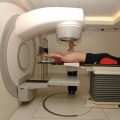Chapter 1 Sing Yu Moorcraft The Royal Marsden NHS Foundation Trust, UK Cancer is currently a major healthcare problem. For example, in the UK, approximately 33% of the population will develop some form of cancer during their lifetime. A person’s risk of developing cancer is dependent on age and therefore the importance of oncology is likely to grow even further in the coming decades as the average age of the population increases. Oncology is one of the fastest developing specialities in medicine, with increasingly complex treatments entering daily practice and a significant number of patients in clinical trials. In the UK, the specialty is comprised of clinical oncology and medical oncology. The main difference is that clinical oncologists deliver radiotherapy, while medical oncologists do not and have historically been more heavily involved in drug research and clinical trials. Patients may present to their oncology team, local hospital, A&E or GP with symptoms due to their cancer (e.g. pain), secondary complications (e.g. bowel obstruction) or side effects from their treatment. This book aims to provide practical guidance on how to manage the most commonly occurring problems experienced by oncology patients. However, this book is not designed to replace local or national guidelines and patients who require admission to hospital should be discussed with their oncology team or the acute oncology team in accordance with local procedures. Oncology treatments can be local or systemic. Local treatments include surgery and radiotherapy. Systemic treatments include chemotherapy, endocrine treatments, immunotherapy and targeted therapies (e.g. monoclonal antibodies or small molecules which target specific receptors or cell signalling pathways). This book provides guidance on the management of toxicities associated with oncology treatment. It is important to consider the aims of treatment when deciding on the most appropriate management strategy. The aims of treatment can be: The management of toxicities should be discussed with the patient’s oncology team, but in general, if a patient is receiving treatment with curative intent, it is important to try to minimise dose delays and reductions, whenever possible, to maintain treatment efficacy. However, in patients receiving palliative treatment, quality of life is the most important consideration. In oncology, treatment decisions are often heavily influenced by both the type and extent of a patient’s tumour. This involves grading and staging their disease. Some cancers have a predictable pattern of nodal spread and therefore some patients undergo a sentinel lymph node biopsy to determine the presence of nodal involvement. The sentinel node is the first lymph node that a cancer drains to and if it is clear of tumour then it is unlikely that lymph nodes further down the chain are involved. Decision making in cancer patients can be complex. The following questions provide a framework to aid in making these decisions. What is the histology/type of cancer? i.e. ‘what is it?’ This impacts on prognosis and treatment, for example some types of cancer are sensitive to radiotherapy (e.g. squamous cell carcinomas), whereas others are relatively radiation resistant. Would neoadjuvant therapy be beneficial? Neoadjuvant therapy may increase the chance of cure if the patient responds to treatment (e.g. by shrinking a tumour so that it can be surgically removed with clear margins). However, there is a risk of the patient’s cancer progressing if they do not respond to neoadjuvant therapy. Would adjuvant therapy be beneficial? This is often a complicated decision as the patient has already had a radical treatment aiming for cure. This treatment alone may have cured the patient. However, some patients will be cured by the addition of adjuvant treatment. The individual patient will not know if they personally benefited from the adjuvant treatment as the benefit is determined from population statistics. There is no biochemical or radiological evidence to show an immediate benefit of treatment. This can be difficult to explain to patients and the choice of statistics used to explain benefits and risks can influence their decisions regarding treatment. Decision-making aids (such as www.adjuvantonline.com) can assist with decision making and explanations.
Introduction to clinical problems in oncology
General approach to the management of oncology patients
Types of treatment
Tumour types and extent of disease
Other important tumour characteristics
Decision making in cancer patients
Stay updated, free articles. Join our Telegram channel

Full access? Get Clinical Tree






